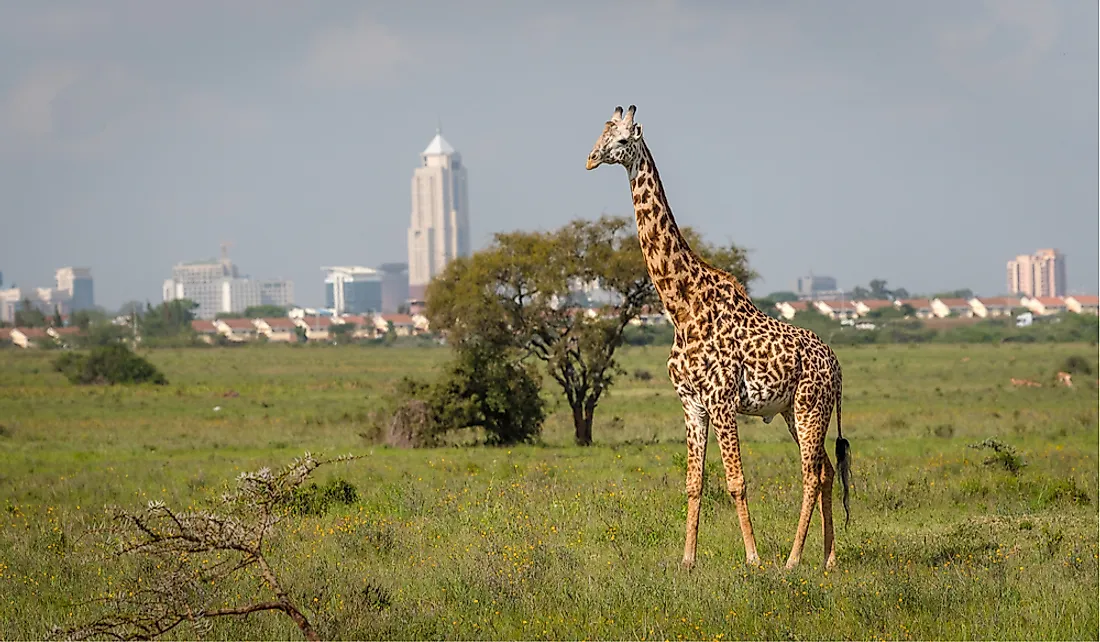Which Is The Oldest National Park In Kenya?

The Nairobi National Park is the oldest of Kenya's national parks. The wildlife sanctuary was established in 1946 and is located four miles south of Kenya's capital, Nairobi. It covers 45.26 square miles making it one of the smallest parks in the country. An electric fence separates the metropolis from the park and prevents wildlife from straying into settlement areas. Nevertheless, conflict between the local people and the animals have increased in recent times as urbanization and diminishing resources threatens the existence of the park. Despite its size, the Nairobi National Park boasts of a large and diversified wildlife population and is among the most successful rhino sanctuaries in the world.
History of the Park
The area occupied by the national park was settled by the nomadic Maasai people who lived in harmony with the wildlife in the late 19th century. The park extended over the vast Athi Plains and conflict between animal and humans was rare. By 1910, the city of Nairobi had grown to about 14,000 and conflict between animals and humans was on the rise. Conservationist Mervyn Cowie was born in April 1909 in the capital but moved to the United Kingdom to pursue higher education. Upon his return in 1932, he was alarmed at the rate at which wildlife population had dwindled. Although hunting was outlawed, cattle grazing and dumping were allowed while part of the park was used for bombing practice by the Royal Air Force. Cowie began a campaign to establish a park to safeguard the wildlife and contain human encroachment. In the early 1940s, the government began resettling the Maasai communities. The Nairobi National Park was officially opened in 1946 and Cowie served as the first director until 1966.
Flora and Fauna
The park's environment is dominantly open plain with scattered acacia trees except for the western upland that is covered by a highland dry forest consisting of Croton dichogamus, Olea africana, Calodendrum, and Brachylaena hutchinsii. Four of the Big Five animals are found in the park; namely the Cape buffalo, black rhinoceros, African lion, and African leopard. Other animals include baboon, zebra, hippopotamus, giraffe, vulture, waterbuck, ostrich, and impala. Small dams have been built along the rivers flowing through the park to provide water to the animals during the dry season. It is considered both a lion and rhinoceros sanctuary and is among the few packs in the world where the black rhinoceros can be seen in its natural habitat.
Critical State of the Park
After thriving for more than six decades, urbanization has finally caught up with the Nairobi National Park as it faces an immediate threat of being overrun by skyscrapers, plastic, sewerage, and air pollution. Migratory routes have been cut off by human settlements even as factories and infrastructure hang close to the park's perimeter. In the 1990s, more than 100,000 wildebeests migrated from the southern end to the northern section but in 2018 less than 1,000 animals completed the migration journey. In the past decade, the government of Kenya constructed two bypasses through the park to ease congestion in the capital. In 2017, the state built a modern railway line through the park linking the port city of Mombasa to the capital. Coexistence between humans and animals is not always peaceful especially for the pastoral communities that herd along the edge of the park. Lions, hyenas, leopards, and wild dogs have resorted to killing livestock as they are easier to hunt, and in retaliation, the pastoralists kill the wild animals.
Conservation Efforts
Despite the doom and gloom, environmentalists and conservationists are spearheading the rehabilitation of the park to its previous state. Volunteers gather at least once a month to plant trees and collect garbage while the Kenya wildlife service has stepped up efforts in combating poaching. Local communities are regularly educated on the importance of preserving the national park and the animals for their benefit.











